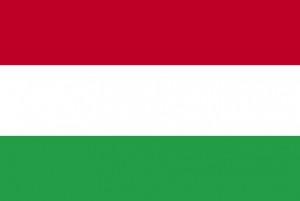Hungary is a landlocked country in Central Europe, northwest of Romania. With a total area of 35,919 square miles, Hungary is slightly smaller than Indiana and is ranked 110th among the largest countries in the world. Hungary’s 2013 population is approximately 9,900,000 people and the country has a density of 279 inhabitants per square mile. By population, it is the 87th most populated nation on Earth. Hungary’s capital and largest city is Budapest, with about 3.2 million people and a density of 1,100 inhabitants per square mile.
Basic History of Hungary
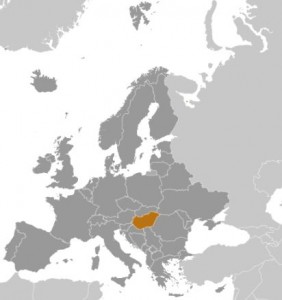 In 1000 AD, Hungary became a Christian kingdom and served as a solid hindrance to Ottoman Turkish expansion across Europe. Even though Hungary won its independence on November 16, 1918, following World War II it fell under Communist rule, like most of the European countries. Mostly known for the invention of Rubik’s cube (by Erno Rubik), by composer Franz Liszt, and by actor Bela Lugosi who played Dracula in the first authorized film adaptation of Dracula, Hungary is a parliamentary democracy member of the European Union (EU), the North Atlantic Treaty Organization (NATO), and the Schengen Agreement. Despite the fact that both Hungary and its neighbor Romania are members of the European Union and the North Atlantic Treaty Organization, Hungary has a dispute with Romania over the so-called “Transylvania problem” because, throughout of history, the territory of Transylvania has often been a subject of argument between the two states.
In 1000 AD, Hungary became a Christian kingdom and served as a solid hindrance to Ottoman Turkish expansion across Europe. Even though Hungary won its independence on November 16, 1918, following World War II it fell under Communist rule, like most of the European countries. Mostly known for the invention of Rubik’s cube (by Erno Rubik), by composer Franz Liszt, and by actor Bela Lugosi who played Dracula in the first authorized film adaptation of Dracula, Hungary is a parliamentary democracy member of the European Union (EU), the North Atlantic Treaty Organization (NATO), and the Schengen Agreement. Despite the fact that both Hungary and its neighbor Romania are members of the European Union and the North Atlantic Treaty Organization, Hungary has a dispute with Romania over the so-called “Transylvania problem” because, throughout of history, the territory of Transylvania has often been a subject of argument between the two states.
[wp_ad_camp_1]
Geography of Hungary
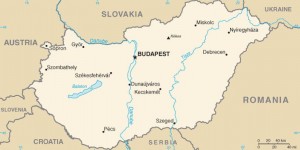 Bordered by Serbia and Croatia to the south, Slovakia to the north, Austria to the west, Ukraine and Romania to the east, and Slovenia to the southwest, Hungary is strategically located astride main land routes between Western Europe and Balkan Peninsula as well as between Ukraine and the Mediterranean basin. With a total surface of 35,919 square miles, Hungary is the 110th largest country in comparison to the world. Hungary is divided both geographically and administrative: the north-south flowing Danube and Tisza Rivers divide the country into three large regions; also, Hungary is divided into 19 counties, 23 urban counties, and one capital city. The climate is Hungary comprises cold, cloudy winters and warm summers. Its terrain is rolling plains with low mountains on the Slovakian border. The lowest point in Hungary is Tisza River (south of Szeged – 249 feet), while the highest peak is Kekes (3,327 feet). Due to pollution, Hungary has several environmental issues. The upgrading of the country’s standards in waste management, energy efficiency, and air, soil, and water pollution to meet EU requirements will require large investments.
Bordered by Serbia and Croatia to the south, Slovakia to the north, Austria to the west, Ukraine and Romania to the east, and Slovenia to the southwest, Hungary is strategically located astride main land routes between Western Europe and Balkan Peninsula as well as between Ukraine and the Mediterranean basin. With a total surface of 35,919 square miles, Hungary is the 110th largest country in comparison to the world. Hungary is divided both geographically and administrative: the north-south flowing Danube and Tisza Rivers divide the country into three large regions; also, Hungary is divided into 19 counties, 23 urban counties, and one capital city. The climate is Hungary comprises cold, cloudy winters and warm summers. Its terrain is rolling plains with low mountains on the Slovakian border. The lowest point in Hungary is Tisza River (south of Szeged – 249 feet), while the highest peak is Kekes (3,327 feet). Due to pollution, Hungary has several environmental issues. The upgrading of the country’s standards in waste management, energy efficiency, and air, soil, and water pollution to meet EU requirements will require large investments.
Population of Hungary
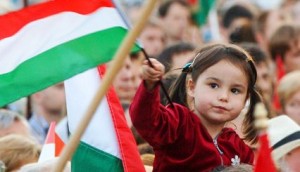 With a total population of 9,939,470 people and a density of 279 inhabitants per square mile, according to an August 2013 estimate provided by the CIA, Hungary is the 87th most populous nation on Earth. The last population census carried out in Hungary took place in October 2011 and it showed a total number of 9,937,628 people. This means that between 2011 and 2013, Hungary’s population increased with 1,842 people. For 2013, the population growth rate is of -0.2%. The literacy rate in Hungary is of 99% – 99.2% for males and 98.9% for females, and unemployment rate is of 26.1% – 27.2% for males and 24.6% for females, while the obesity rate is of 27.6%. Birth rate is of 9.37 births/1,000 population and death rate is of 12.71 deaths/1,000 population. Life expectancy at birth of the total population is 75.24 years – 71.5 years for males and 79.19 years for females, while sex ratio of the total population is of 0.91 male(s)/female. According to a projection made by Eurostat, the Statistical Office of the European Communities, Hungary’s population will reach 9,501 million people in 2035 and 8,717 million people in 2060.
With a total population of 9,939,470 people and a density of 279 inhabitants per square mile, according to an August 2013 estimate provided by the CIA, Hungary is the 87th most populous nation on Earth. The last population census carried out in Hungary took place in October 2011 and it showed a total number of 9,937,628 people. This means that between 2011 and 2013, Hungary’s population increased with 1,842 people. For 2013, the population growth rate is of -0.2%. The literacy rate in Hungary is of 99% – 99.2% for males and 98.9% for females, and unemployment rate is of 26.1% – 27.2% for males and 24.6% for females, while the obesity rate is of 27.6%. Birth rate is of 9.37 births/1,000 population and death rate is of 12.71 deaths/1,000 population. Life expectancy at birth of the total population is 75.24 years – 71.5 years for males and 79.19 years for females, while sex ratio of the total population is of 0.91 male(s)/female. According to a projection made by Eurostat, the Statistical Office of the European Communities, Hungary’s population will reach 9,501 million people in 2035 and 8,717 million people in 2060.
[wp_ad_camp_2]
Largest city in Hungary
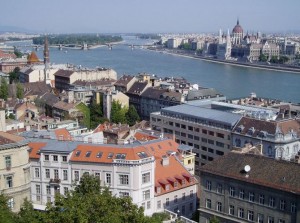 Budapest is the capital and the largest city in Hungary, with a total population of 3,284,110 people and a density of 1,100 inhabitants per square mile. Budapest is not only the largest city in Hungary, but also the largest one in East-Central Europe. Budapest became one city after the union of fortresses Buda and Pest (military frontiers, situated on the two banks of Danube) in 1873. More precisely, Budapest is partitioned by the Danube River in the old city, Buda, and the new city, Pest. The next largest cities in Hungary are Debrecen (211,320 people), Szeged (170,052 people), Miskolc (167,754 people), and Pecs (156,801 people).
Budapest is the capital and the largest city in Hungary, with a total population of 3,284,110 people and a density of 1,100 inhabitants per square mile. Budapest is not only the largest city in Hungary, but also the largest one in East-Central Europe. Budapest became one city after the union of fortresses Buda and Pest (military frontiers, situated on the two banks of Danube) in 1873. More precisely, Budapest is partitioned by the Danube River in the old city, Buda, and the new city, Pest. The next largest cities in Hungary are Debrecen (211,320 people), Szeged (170,052 people), Miskolc (167,754 people), and Pecs (156,801 people).
Ethnicity in Hungary
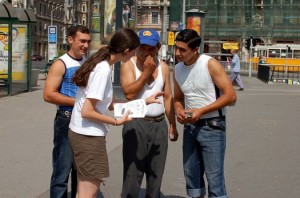 The demographics of Hungary as well as its ethnic groups have fluctuated significantly over time due to migrations and territorial changes. According to the 2011 census, the dominant ethnic group in Hungary is the Hungarians, accounting for 84% of the total population. The next largest ethnic group is Roma, with 3.1% of the population, followed by German (1.3%), Slovaks (0.3%), Romanians (0.2%), Croats (0.2%), Serbs (0.1%), others (0.6%), and not stated (14.7%). On the other hand, a 2001 census showed that 94% were Hungarian people, while 6.4% were of other or unspecified nationalities.
The demographics of Hungary as well as its ethnic groups have fluctuated significantly over time due to migrations and territorial changes. According to the 2011 census, the dominant ethnic group in Hungary is the Hungarians, accounting for 84% of the total population. The next largest ethnic group is Roma, with 3.1% of the population, followed by German (1.3%), Slovaks (0.3%), Romanians (0.2%), Croats (0.2%), Serbs (0.1%), others (0.6%), and not stated (14.7%). On the other hand, a 2001 census showed that 94% were Hungarian people, while 6.4% were of other or unspecified nationalities.
Religion in Hungary
 As of the 2011 census, 39% of the total Hungarian population is Roman Catholic, 1.8% is Greek Catholic, 11.6% is Calvinist, 2.2% is Lutheran, 1.9% believes in other religion, 16.7% is non-religious, and 27.2% not stated. A census carried out in 2001 revealed that there were 51.9% Roman Catholics, 15.9% Calvinists, 3% Lutherans, 2.6%, Greek Catholic, 1% other Christians, 11.1% of other or unspecified religion, and 14.5% unaffiliated. Over 23,000 Jehovah’s Witnesses worship peacefully in Hungary.
As of the 2011 census, 39% of the total Hungarian population is Roman Catholic, 1.8% is Greek Catholic, 11.6% is Calvinist, 2.2% is Lutheran, 1.9% believes in other religion, 16.7% is non-religious, and 27.2% not stated. A census carried out in 2001 revealed that there were 51.9% Roman Catholics, 15.9% Calvinists, 3% Lutherans, 2.6%, Greek Catholic, 1% other Christians, 11.1% of other or unspecified religion, and 14.5% unaffiliated. Over 23,000 Jehovah’s Witnesses worship peacefully in Hungary.
Language in Hungary
 The official language in Hungary is Hungarian, of the Ugric subset of Uralic languages and is somehow related to Estonian and Finnish. In accordance to the 2011 census, Hungarian is spoken by 99% of the population. Hungarians also speak German, Slovak, Croatian, Romanian, Ukrainian, Serbian and Slovenian. As stated by the 2001 census, 94% of Hungarians speak the Hungarian language, while 6% were using other or unspecified languages. While less than 10,000,000 speak the Hungarian language within the country’s borders, some language experts believe that as many as an additional 2,500,000 people speak it globally, with sizable populations in Canada and Austria listen it as a second spoken language.
The official language in Hungary is Hungarian, of the Ugric subset of Uralic languages and is somehow related to Estonian and Finnish. In accordance to the 2011 census, Hungarian is spoken by 99% of the population. Hungarians also speak German, Slovak, Croatian, Romanian, Ukrainian, Serbian and Slovenian. As stated by the 2001 census, 94% of Hungarians speak the Hungarian language, while 6% were using other or unspecified languages. While less than 10,000,000 speak the Hungarian language within the country’s borders, some language experts believe that as many as an additional 2,500,000 people speak it globally, with sizable populations in Canada and Austria listen it as a second spoken language.
Economy in Hungary
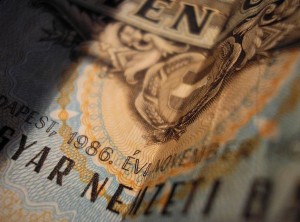 With an economy based mainly on services (68.2%), industry (28.5%) and agriculture (3.3%), Hungary’s GDP in 2012 was of $198.8 billion, lower than the one in 2011 – $202.2 billion – and almost the same as the one in 2010 – $198.9 billion. Even though in 2010 and in 2011 Hungary had a positive economic growth (1.2% in 2010 and 1.7% in 2011), in 2012 it recorded a negative growth rate of -1.7%. As an effect, the GDP per capita was in 2012 of $20,000. Also, the unemployment rate is of about 10.9% and approximately 14% of the Hungarians live below the World Bank’s poverty line. Between 2011 and 2012, the Budapest government marked a failed attempt of obtaining financial backstop from the International Monetary Fund (IMF) and the European Union (EU). Since joining the EU in 2004, Hungary has been subject to the European Commission’s Excessive Deficit Procedure. Brussels has requested that the government outline measures to sustainably reduce the budget deficit to under 3% of GDP.
With an economy based mainly on services (68.2%), industry (28.5%) and agriculture (3.3%), Hungary’s GDP in 2012 was of $198.8 billion, lower than the one in 2011 – $202.2 billion – and almost the same as the one in 2010 – $198.9 billion. Even though in 2010 and in 2011 Hungary had a positive economic growth (1.2% in 2010 and 1.7% in 2011), in 2012 it recorded a negative growth rate of -1.7%. As an effect, the GDP per capita was in 2012 of $20,000. Also, the unemployment rate is of about 10.9% and approximately 14% of the Hungarians live below the World Bank’s poverty line. Between 2011 and 2012, the Budapest government marked a failed attempt of obtaining financial backstop from the International Monetary Fund (IMF) and the European Union (EU). Since joining the EU in 2004, Hungary has been subject to the European Commission’s Excessive Deficit Procedure. Brussels has requested that the government outline measures to sustainably reduce the budget deficit to under 3% of GDP.

